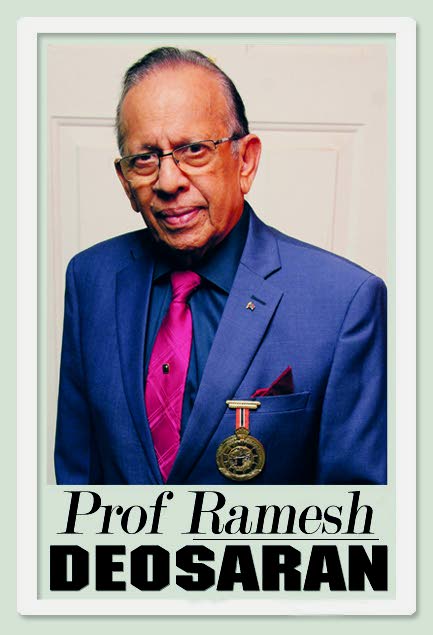How Dr Varma hunts diabetes

Of course, the warning includes managing your diet and doing required exercise. If not, the consequences include surgical removal of limbs, heart and vision problems, etc. Diabetes is a killer.
Today, I put aside “our serious crime problem,” party politics, the judiciary, and even St Lucia’s Allen Chastanet (“Tropical Trump”) to bring diabetes to public attention. After all, your health comes first.
A new well-patented and informative 218-page book, Alternative Medicines for Diabetes Management, Advances in Pharmacognosy and Medicinal Chemistry, by associate professor Dr Varma Rambaran and research assistant Nalini K Singh (University of TT) brings a wealth of scientific information not only about pharmaceutical drugs but also about ayurvedic medicine, that is, the use of herbs, fruits and vegetables for medicinal purposes.
Rambaran, popularly called Dr Varma, holds a doctorate in inorganic chemistry and has utilised international research co-operation to validate his research. Using medicinal data also from China and India, he notes the lack of scientific information has led to “a bias against the use of herbal medicines by insinuating that the claims being made are more witchcraft than science.”
His patented pioneering research shows that the chemical vanadium has a “similar mechanism as insulin” but where there is “insulin resistance,” vanadium compound can helpfully initiate or prolong glucose uptake.
This book has considerable merit in terms of academic, commercial and cultural value. Tackling the dreaded disease of Type 2 diabetes, and with an extensive list of reputable references and glossary, Rambaran skilfully uses “international research efforts to bring folklore into scientific inquiry.”
The book illustrates this country has an abundance of such ayurvedic medicines – from tamarind, ochro, garlic, soursop, neem, lemon, grapefruit, gourd, turmeric, fever grass, lantana, mango, timarie, carailli to saijan and tulsi. For each of the long list of insulin-reduction medicines, the authors provide the chemical structure in support of their respective family groupings. And shortcomings as well.
Diabetes mellitus (DM), the authors say, is ranked as “one of the top four non-communicable diseases in the world.” East Indians, our doctors note, are quite susceptible to this disease.
Explaining the book’s goal, Rambaran and Singh state: “We were concerned about the uncontrolled rise in cases of DM throughout the world and the lack of availability of many prescription drugs due to economic factors. We believe that knowledge (backed by science) of alternative forms of therapy for this disease would be welcomed by those who are unable to procure such medication.”
For the general public, they further explain: “DM’s diagnosis as a metabolic disease arises from either the pancreas’s inability to produce sufficient quantities of insulin or the desensitisation of the human insulin receptor glycoprotein).” They note how the “ongoing rivalry between the usage of pharmaceutical medicines versus herbal remedies for treating diabetes” has encouraged inquiry into herbal value.
In this context, it is important to note the book’s preface: “The ongoing rivalry between the recommended usage of allopathic (pharmaceutical) medicines versus herbal remedies (for treating diabetes) has encouraged many researchers to focus their studies on thoroughly isolating and characterising extracts from different parts of plants and then evaluating their relative activities.”
They add: “The book unbiasedly explains the respective mechanisms of action along with their benefits and shortcomings.” Varma encourages “further supportive research to clear up the grey areas and promote ethnopharmacology in a respected light.”
Patiently compiling published research and molecular illustrations on over 50 different plants (eg garlic, onion, tamarind, pawpaw, lime, celery, citronella grass, moringa and even carailli), these enterprising researchers produced a very informative summary comparing the “efficacy” of each with a pharmaceutical (allopathic) counterpart.
Some discussions and illustrations are inevitably quite technical, requiring some basic knowledge of medicinal chemistry. After all, it is from here the book gains its authority.
All in all, however, this is an international publication whose time has surely come and the authors deserve commendation for their dedicated effort. There are lots of very useful springboard data for graduate students, research-oriented doctors, Ministry of Health and the Diabetes Association, which should send a copy to the International Diabetes Federation in Brussels, Belgium. The informative glossary and rich list of references add to the book’s value. It must not remain on the shelf. (The book is available at Amazon.com and Taylor and Francis’ website)


Comments
"How Dr Varma hunts diabetes"